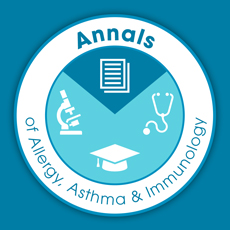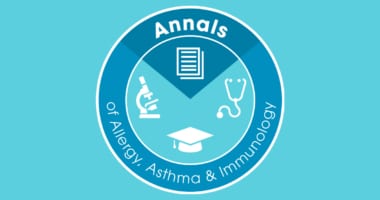 Here’s a quick look at two interesting articles in the September issue of the Annals of Allergy, Asthma and Immunology.
Here’s a quick look at two interesting articles in the September issue of the Annals of Allergy, Asthma and Immunology.
The first, by Andre Valcour, PhD and colleagues, addresses the utility of describing peanut-allergic patients with component testing. This study used over 12,000 plasma samples positive for the presence of peanut IgE. The samples were collected from across the U.S. and tested against five component peanut allergens. They found sensitization to individual peanut components is highly dependent on age and geographic location and, based upon other work, that component positivity might reflect variable degrees of risk for systemic reactions after peanut ingestion. This work is provocative and contributes to the increasing knowledge about whether component testing may ultimately prove clinically useful.
The second, by Cynthia Esteban, NP, MSN, MPH and colleagues looked for a relationship between allergen sensitization and sleep outcomes in a cohort of inner city children with asthma. They found an inverse relationship between the number of positive allergy skin tests and sleep efficiency in these children. This translated to increased wakening and was more pronounced in children with lower FEV1 home measurements. This information could be important to clinicians who take care of children with asthma with reported decreased sleep efficiency. Further, these relationships may alert clinicians and parents to a higher risk for disturbed sleep in children with asthma and a larger number of positive allergy skin tests.
As always, I welcome your feedback as we seek to make each new Annals issue better than the last.
Gailen Marshall Jr., MD, PhD, FACAAI
Editor-in-chief of Annals

